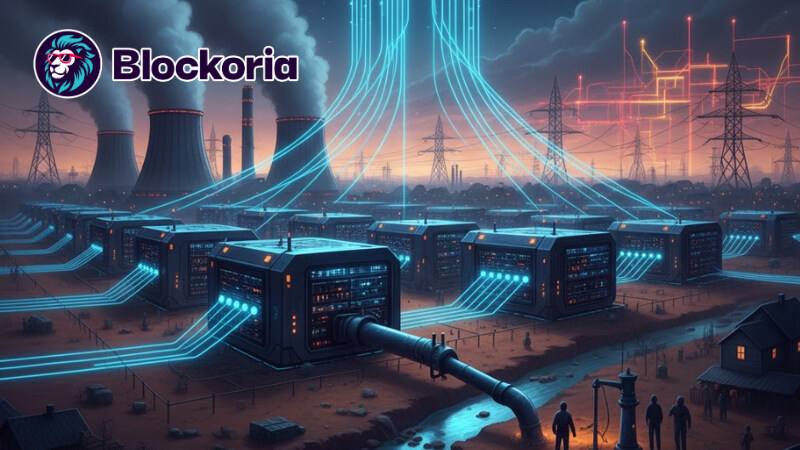.png)
Bitcoin's network pulse has accelerated again, with aggregate processing power surpassing the 1.05 ZH/s mark and in response the protocol has increased the mining difficulty by 5% to a record 150.84 T - the seventh consecutive increase. Every 2,016 blocks, the algorithm adjusts to keep the average time to find a block to around ten minutes, and this round illustrates just how quickly new machines are joining in.
Increasing the hash rate increases the safety of the chain, but turns finding a block into a more expensive race. This pressure is clearly evident in the hashprice metric - a miner's revenue per unit of power. The metric has once again dipped below $50 per PH/s, although back in the summer when Bitcoin briefly climbed above $118,000, the value was as high as $52. Now there is simultaneous pressure from increased complexity and weak commissions, which remain at multi-year lows.
As a result, miners are looking for room to maneuver. Theoretically, three levers can help: the growth of commissions, a new rally in the price of the coin or a slowdown in hashrate growth. While the first two factors have not yet manifested themselves fully, some players are rapidly phasing out outdated ASIC installations and switching to more energy-efficient models, while others are signing long-term contracts for cheap electricity supply.
Investors, on the other hand, are reacting more optimistically. Against the background of the October rise of the main cryptocurrency, the shares of specialized companies are steadily growing: the quotations of Cipher Mining for the month added more than 51%, Bit Digital rose by 25%, and Marathon Digital jumped by almost 16%.
At the same time, the next halving, scheduled for spring 2026, is looming on the horizon. When the reward per block is cut in half, the economics of mining will become even tighter. Analysts expect some inefficient farms to shut down voluntarily, but the aggregate hash rate may remain high thanks to the introduction of modern 7-nanometer chips and a strong inflow of capital from institutional investors looking to secure a share in the new round of the cycle.
Meanwhile, experts remind us that complexity records often foreshadow fresh innovations in the industry. Improvements in cooling systems, firmware optimization and the search for unconventional energy sources can partially compensate for a miner's dwindling financial “oxygen tank”.
Not everyone can withstand such a race to the bottom, and the market is gradually squeezing out the weakest participants while strengthening the stability of the network. As the ecosystem matures, mining is transforming from a gold rush to a high-tech industry where the main weapon is efficiency and willingness to change quickly.



